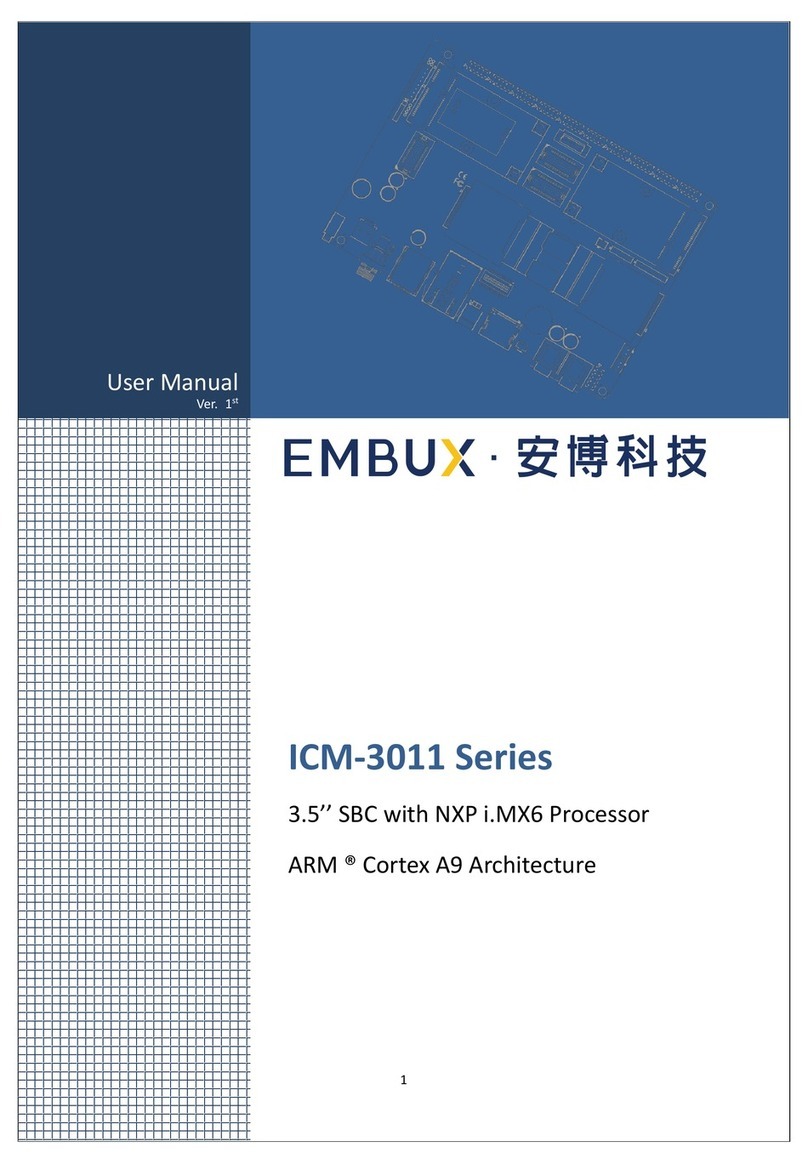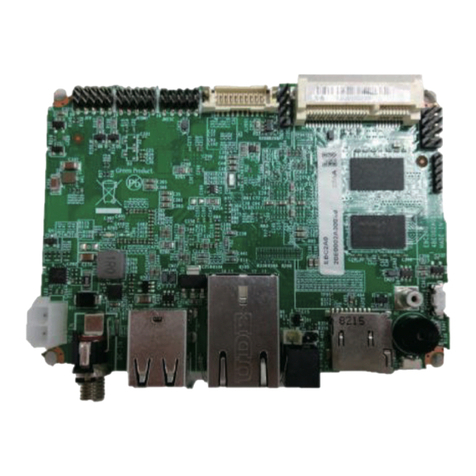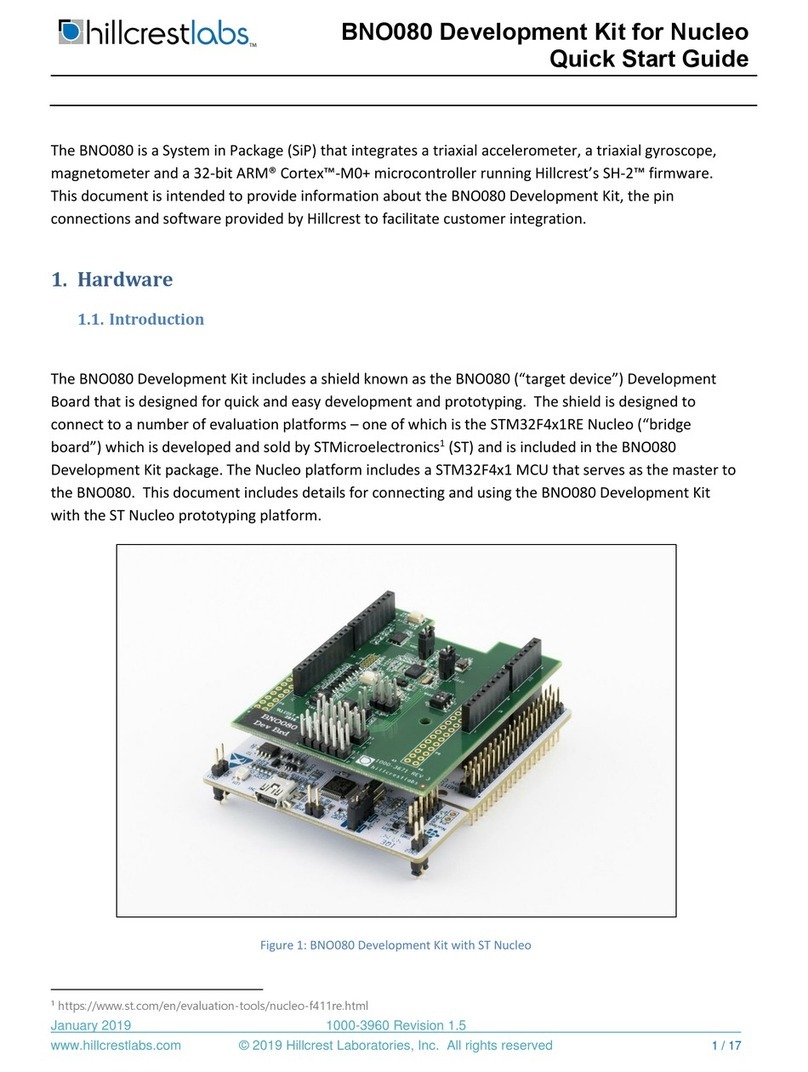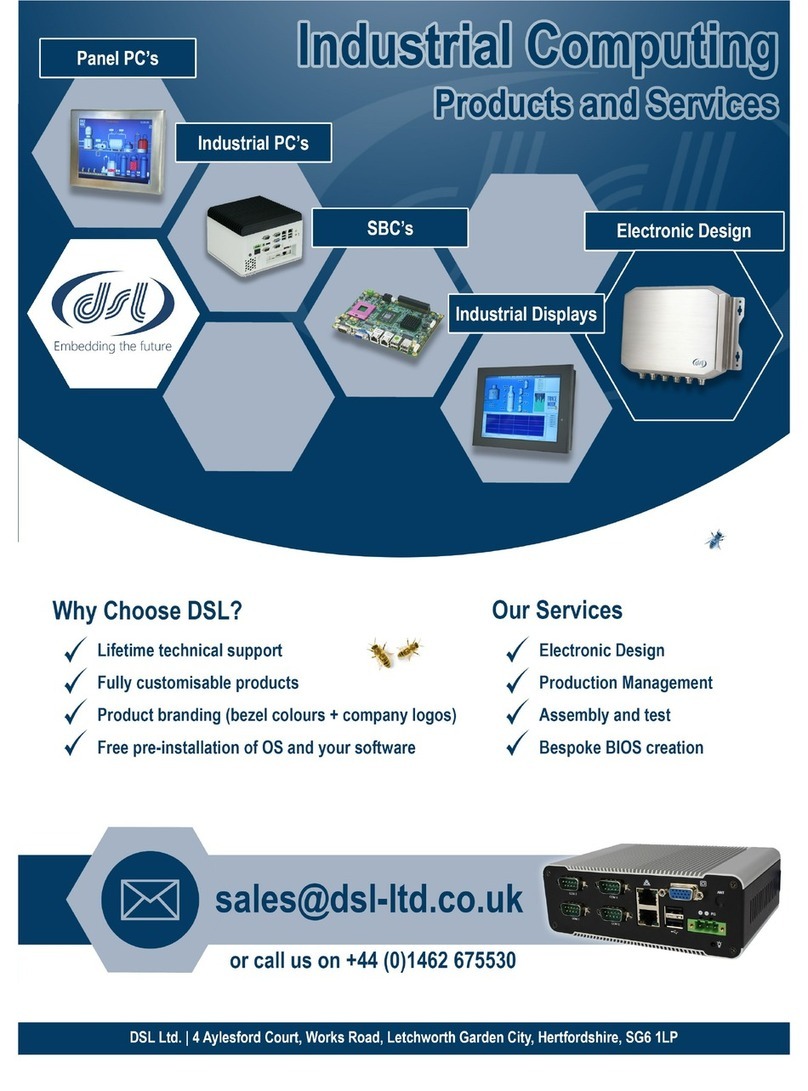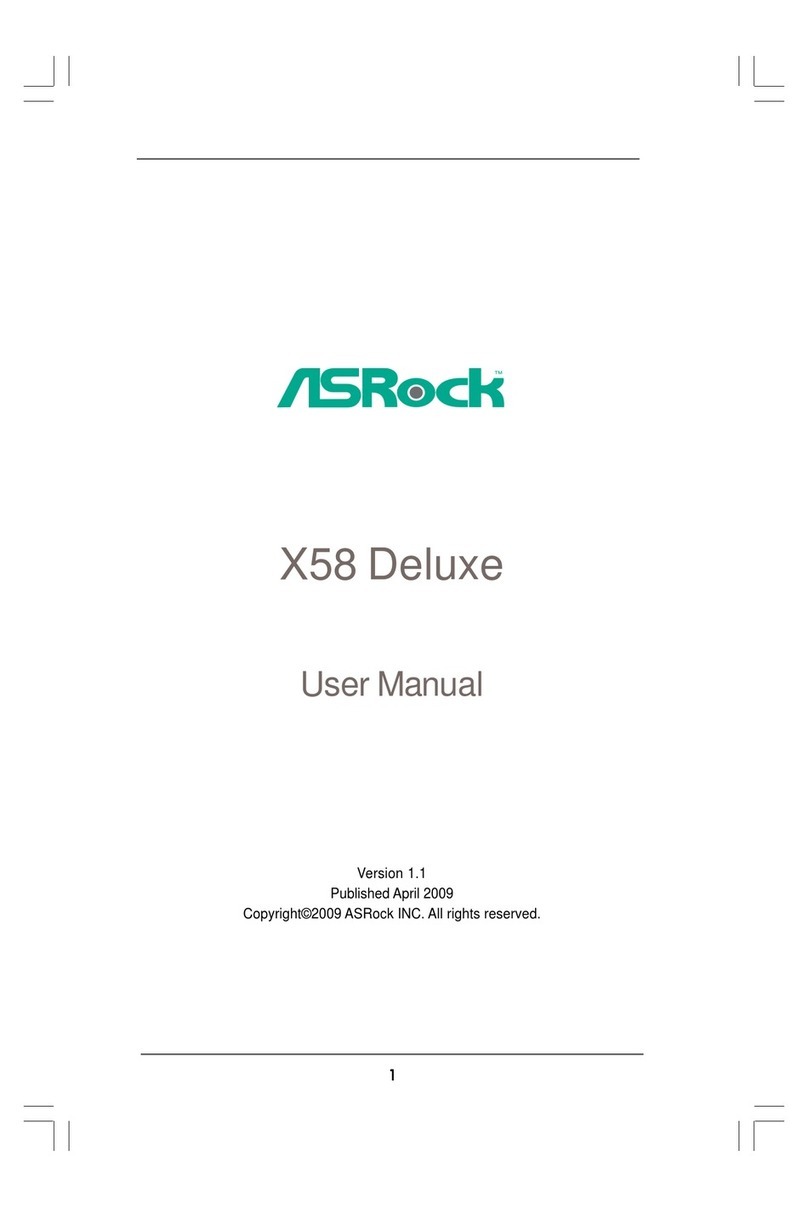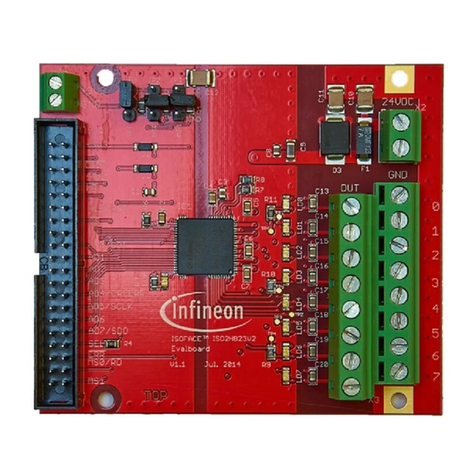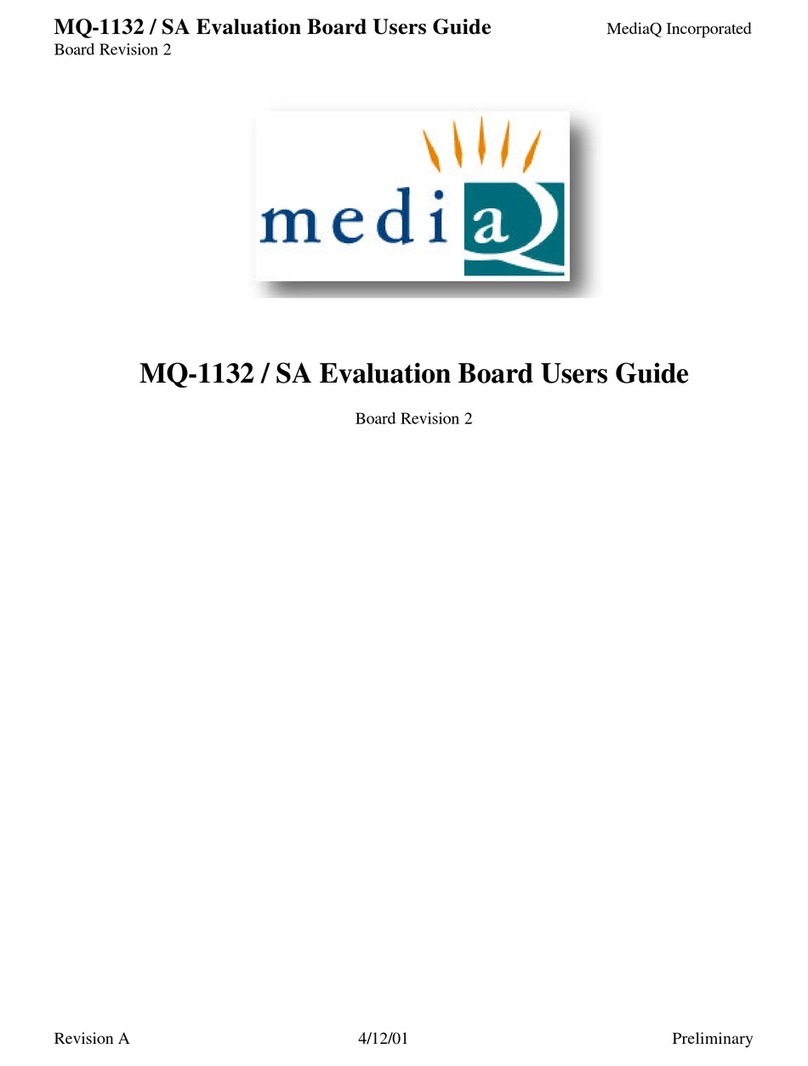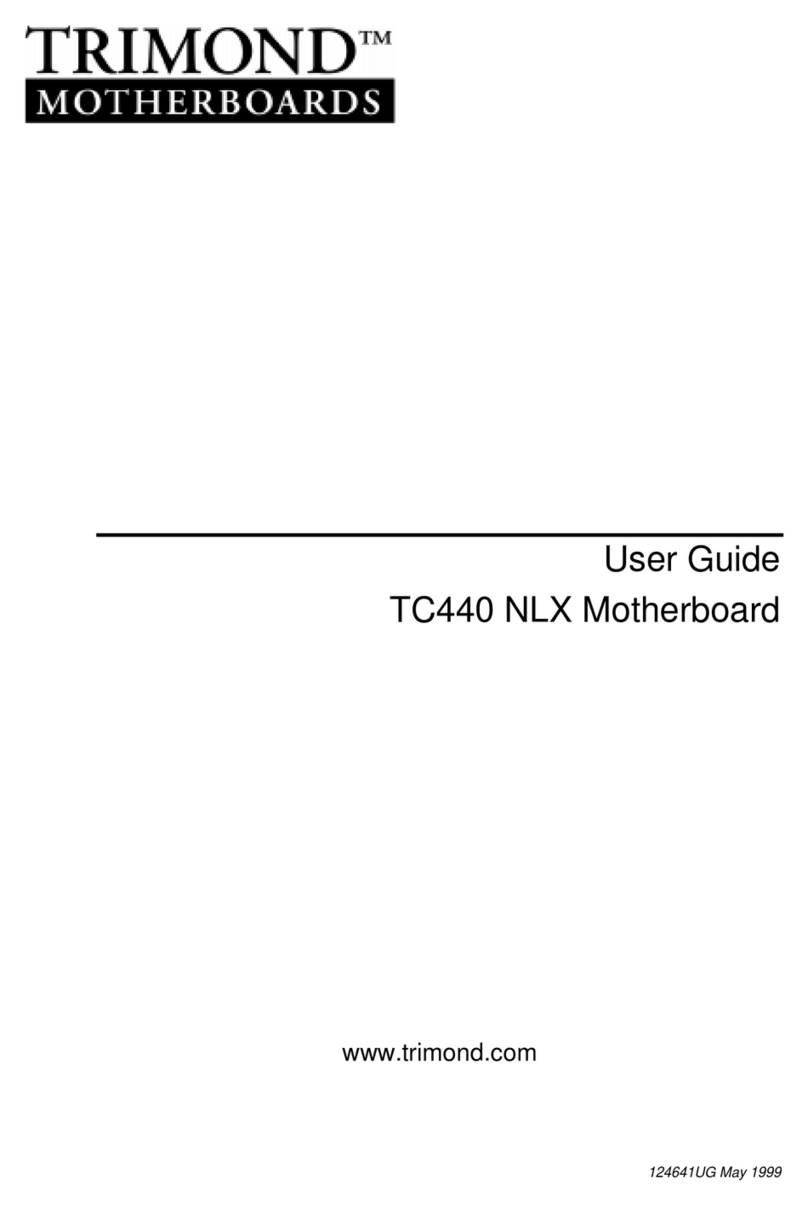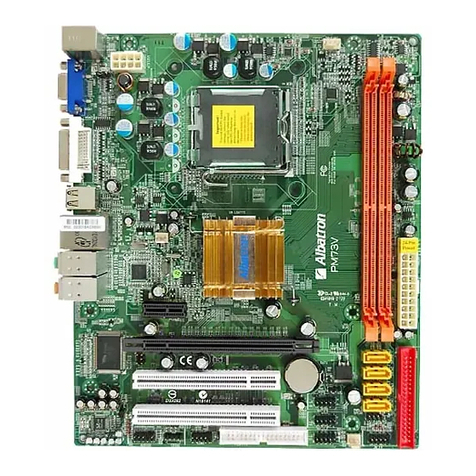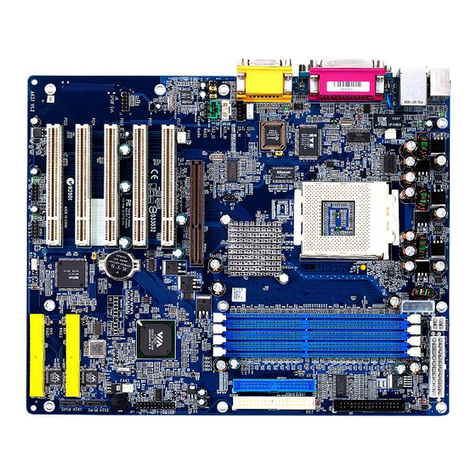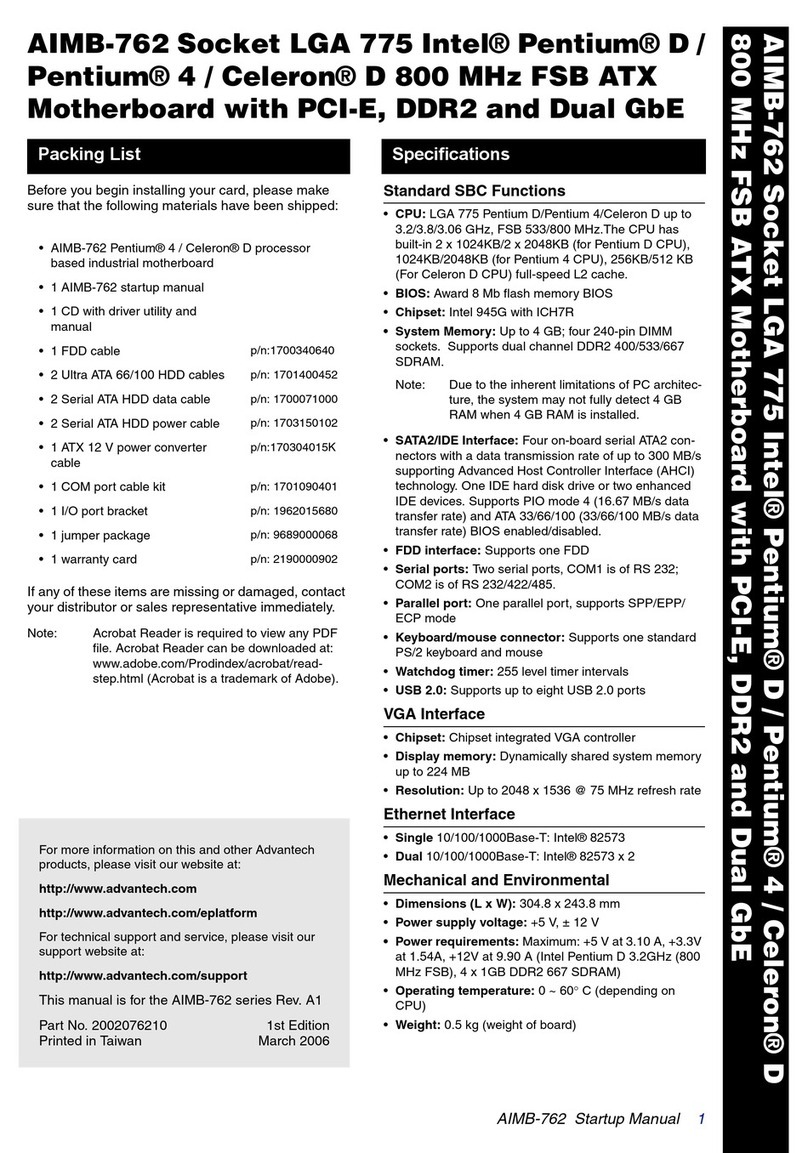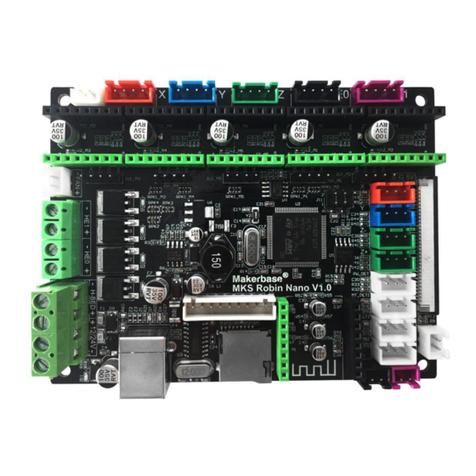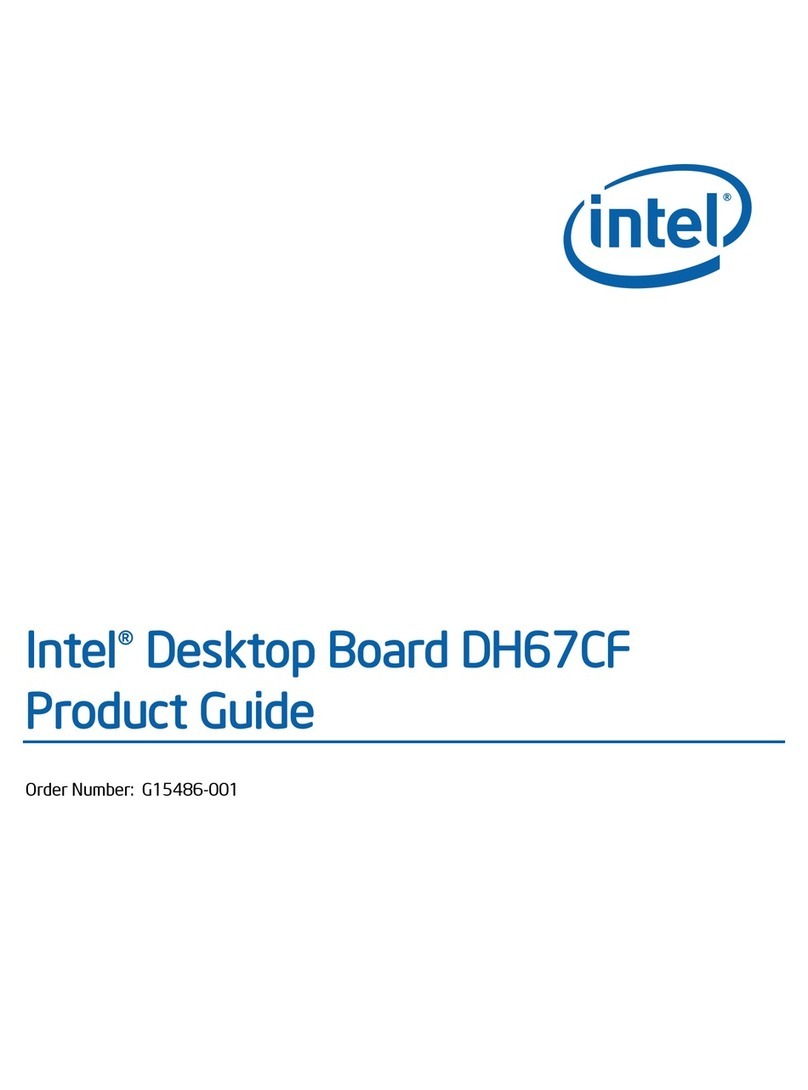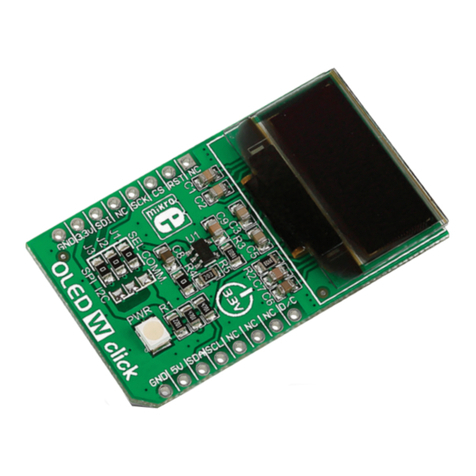Embux ICM-2010 Series User manual

1
ICM-2010 Series
2.5’’ SBC with Freescale i.MX6 Processor
ARM ® Cortex A9 Architecture
User Manual
Ver. 1st

2
Copyright
Copyright © 2015 EMBUX Technology Co., Ltd., All rights reserved.
EMBUX Technology Co., Ltd. reserves the right to make improvements in the
products described in this manual at any time without notice. No part of this
manual may be reproduced, copied, translated or transmitted in any form or by
any means without prior written permission of EMBUX Technology Co., Ltd.
Trademark
The EMBUX logo is a registered trademark of EMBUX Technology Co., Ltd.
All other trademarks or registered marks in this manual belong to their respective
manufacturers.
Disclaimer
Information in this document is subject to change without notice and does not
represent a commitment on the part of EMBUX.
EMBUX provides this document as is, without warranty of any kind, either
expressed or implied, including, but not limited to, its particular purpose. EMBUX
reserves the right to make improvements and/or changes to this manual, or to
the products and/or the programs described in this manual, at any time.
Information provided in this manual is intended to be accurate and reliable.
However, EMBUX Technology Co., Ltd. assumes no responsibility for its use, nor
for any infringements of the rights of third parties, which may result from its use.
This product might include unintentional technical or typographical errors.
Changes are periodically made to the information herein to correct such errors,
and these changes are incorporated into new editions of the publication.

3
Declaration of Conformity
FCC Class B
Note: this device has been tested and found to comply with the limits for a Class
B digital device, pursuant to part 15 of the FCC Rules. These limits are designed
to provide reasonable protection against harmful interference in a residential
installation. This device generates, uses and can radiate radio frequency energy
and, if not installed and used in accordance with the instructions, may cause
harmful interference to radio communication. However, there is no guarantee
that interference will not occur in a particular in a particular installation. If this
device does cause harmful interference to radio or television reception, which
can be determined by turning the device off and on, the user is encouraged to try
to correct the interference by one or more of following measures:
Reorient or relocate the receiving antenna
Increase the separation between the device and receiver
Connect the device into an outlet on a circuit different from that to which
receiver is connected
Consult the dealer or an experienced radio/TV technician for help
CE Marking
This device has passed the CE test for environmental specifications when shielded
cables are used for external wiring. We recommend the use of shielded cables.
This device has passed the CE test for environmental specifications. Test
conditions for passing included the equipment being operated within an
industrial enclosure. In order to protect the product from being damaged by ESD
(Electrostatic Discharge) and EMI leakage, we strongly recommend the use of CE-
compliant industrial enclosure products.

4
Document Amendment History
Revision
Date
Remark
1st
May 2015
Initial released
2nd
May 2015
Modify RS-232 (JCOM1) description from full pins
to 2 pins function
3rd
Nov 2015
Product Overview/Hardware User Guide updated
4th
Dec 2015
Software User Guide/System Recovery changed

5
Table of Contents
1. Product Overview ................................................................................................89
1.1. Introduction .........................................................................................89
1.2. Specification.........................................................................................89
1.3. Block Diagram ..................................................................................1011
2. Hardware User Guide.......................................................................................1213
2.1. Connector Locations ........................................................................1213
2.2. Connector.........................................................................................1315
2.2.1. Connector List ..........................................................................1315
2.2.2. Connector Pin Definition..........................................................1315
2.2.2.1. RS-485 ..............................................................................1315
2.2.2.2. JCOM1..............................................................................1416
2.2.2.3. JDC in................................................................................1416
2.2.2.4. JEMBUX............................................................................1416
2.2.2.5. JFP ....................................................................................1517
2.2.2.6. JI2C...................................................................................1517
2.2.2.7. JLVDS ................................................................................1517
2.2.2.8. JMISC................................................................................1517
2.2.2.9. JRS-485.............................................................................1618
2.2.2.10. JSIM................................................................................1618
2.3. Mechanical Drawing.........................................................................1618
3. Software User Guide........................................................................................1820
3.1. Introduction .....................................................................................1820
3.2. Create SD/MMC Card using Linux Host ...........................................1820
3.2.1. Requirements...........................................................................1820
3.2.2. SD/MMC Partitions ..................................................................1921
3.2.3. Copying the Boot loader Image ...............................................2022
3.2.4. Copying the Kernel Image and Device Tree Files .....................2022
3.2.5. Copying the Root File System (rootfs)......................................2022
3.3. Applications and Testing ..................................................................2123
3.3.1. Ethernet Test ............................................................................2123
3.3.2. USB...........................................................................................2123
3.3.3. SD .............................................................................................2224
3.3.4. I2C ............................................................................................2224
3.4. Create a Virtual Machine Environment............................................2325
3.4.1. Introduction .............................................................................2325
3.4.2. Setting up work environment ..................................................2325

6
4. System Recovery ..............................................................................................2628
4.1. Download the SD image...................................................................2628
4.2. Write an SD/MMC Card using Linux (Ubuntu).................................2628
4.3. Write an SD/MMC Card using Windows..........................................2729
4.3.1. Introduction .............................................................................2729
4.3.2. Preparations.............................................................................2729
4.3.3. Create SD-Card.........................................................................2729
4.4. Write an SD/MMC Card using MAC OS X.........................................2830
4.4.1. graphical interface ...................................................................2830
4.4.2. Command line..........................................................................2931
4.4.3. Alternative method..................................................................2931

7
Chapter 1
Product Overview
This chapter provides background
Information of SBC.

8
1. Product Overview
1.1. Introduction
ICM-2010 is a 2.5’’ SBC (Single Board Computer) with ARM Cortex-A9
Freescale i.MX6 DualLite 1GHz processor and ARM Cortex™-M0 32-bit RISC core
(MCU). The ICM-2010 supports 1GB DDR3 and 8MB onboard NOR Flash, 1 x LVDS,
1 x HDMI display, 1 x Gigabit LAN with IEEE 1588, 3 x USB 2.0, 1 x micro USB type
B (device mode only), 1 x RS-232, 1 x RS-485, 1 x CAN, 1 x Full size mini PCIe, 1 x
SD and 1 x SIM (header).
Integrated unique dual hardware structure and RTOS (Real Time Operating
System) design, ICM-2010 has outstanding crash free protection on both
hardware reliability and software stability. With the special features, ICM-2010 is
a perfect device to meet customers’ versatile needs.
The ICM-2010 focuses on industrial application and it provides high
performance and low power consumption from its ARM ® Cortex A9 architecture
which is ready-to-run, compact, and easy-to-expand. With flexible I/O interfaces,
and complete hardware and software solutions, ICM-2010 is a fast time-to-
market platform for customers to develop their applications and products easily.
1.2. Specification
System Hardware - CPU
CPU
Freescale i.MX6 Cortex-A9 DualLite
Memory
Technology
DDR3-800
Capacity
Onboard 1GB
Flash
8MB NOR Flash
Graphic
HDMI
1 x HDMI connector
LVDS
1 x 18/24 bit LVDS header (2x10 1.25mm Hirose DF13 series
compatible)
Watchdog Timer
1~256 level (0.5 second / level)
RTC
EPSON RX8010SJ RTC chip
Indicator
LED
1 x configurable indicator controlled by i.MX6
I/O
LAN
1 x Micrel KSZ9031RNX Gigabit Ethernet
USB
1 x USB (miscellaneous header)
1 x 2 ports USB (double-deck connector)
USB OTG
1 x micro USB type B (device mode only)
Serial Port
1 x RS-232 header (2x5 2.0mm pin header)
1 x RS-485 (1x2 3.5mm terminal block)
CAN
1 x CAN bus header (miscellaneous header-JMISC)
SD socket
1 x SD socket

9
Button
1 x power-on button
Expansion
Full size
mini PCIe
1 x full size mini PCIe socket
SIM slot
1 x SIM card header
System Hardware - MCU
(For EMBUX system product design only)
MCU
STM32F051R8T6
Memory
Flash
8MB NOR Flash
I/O
EMBUX X Port
1 x EMBUX X Port (miscellaneous header-JEMBUX)
I2C
1 x I2C interface (2x10 1.25mm Hirose DF13 series compatible, shared
with SPI and GPIO) for Mainboard MCU to accessory (i.e OLED module)
connection purpose
SPI
1 x SPI interface (2x10 1.25mm Hirose DF13 series compatible, shared
with I2C and GPIO) for Mainboard MCU to accessory (i.e OLED module)
connection purpose
GPIO
7-bit GPIO (2x10 1.25mm Hirose DF13 series compatible, shared with
SPI and I2C) for Mainboard MCU to accessory (i.e OLED module)
connection purpose
2-bit GPIO (5x2 header, pitch 2.0mm-JFP)
System Software
Operating System
ubuntu
Precise 12.04
yocto
Daisy 1.6.2
android
Lollipop 5.0.2
WEC
Windows Embedded Compact 7
Environment & Mechanism
Temperature
Operating
temperature
-20~70°C
Humidity
Operating
humidity
5%~95% Relative Humidity, non-condensing
Mechanism
Dimension
PICO-ITX (100mm X 72mm)
Power
DC-input
5V (4.75V~5.25V)
Control
Power on by DC attached or via power button
Consumption
~3W

10
1.3. Block Diagram

11
Chapter 2
Hardware User Guide
This chapter introduces the startup procedures of ICM-2010,
including jumper setting and device integration. It also introduces
the setting of switches, indicators and also shows the mechanical
drawings. Be sure to real all safety precautions before you begin
installation procedure.

12
2. Hardware User Guide
2.1. Connector Locations
Top side:
Rear side:
JFP
JCOM1
JMISC
JLVDS
JI2C
MPCIE
JSIM
JEMBUX
Connector
JDC in
DC in
USB
LAN
RS-485
HDMI
JRS-485

13
2.2. Connector
2.2.1. Connector List
DC in
DC power input connector
DC power jack
RS-485
RS-485 connector
2 x 1 connector, pitch 3.5mm
HDMI
HDMI connector
JCOM1
RS-232 pin header
5 x 2 header, pitch 2.0mm
JDC in
Power input pin header
2 x 1 connector, pitch 4.2mm
JEMBUX
Proprietary connector
DF13-20DP-1-25V
JFP
Front panel connector
5 x 2 header, pitch 2.0mm
JI2C
I2C connector
4 x 1 header, pitch 2.54mm
JLVDS
LVDS connector
DF13-20DP-1-25V
JMISC
Miscellaneous connector
5 x 2 header, pitch 2.0mm
JRS-485
Reserved for X-Port connect
2 x 1 header, pitch 2.0mm
JSIM
SIM connector + SATA PWR
4 x 2 header, pitch 2.54mm
LAN
Ethernet connector
RJ-45
MPCIE
Mini PCI Express connector
SATA
SATA connector
USB
USB connector
USB Type A
2.2.2. Connector Pin Definition
2.2.2.1. RS-485
Description
Pin
RS-485-
1
RS-485+
2

14
2.2.2.2. JCOM1
Description
Pin
Pin
Description
N/C
1
2
RS-232_RX
RS-232_TX
3
4
N/C
GND
5
6
N/C
N/C
7
8
N/C
N/C
9
10
N/C
2.2.2.3. JDC in
Description
Pin
GND
1
5V
2
2.2.2.4. JEMBUX
Description
Pin
Pin
Description
3.3V
2
1
5V
3.3V
4
3
5V
GPIO0
6
5
GND
GPIO1
8
7
MCU_SS
GPIO2
10
9
MCU_CLK
GPIO3
12
11
MCU_MOSI
GPIO4
14
13
MCU_MISO
GPIO5
16
15
GND
GPIO6
18
17
I2C CLK
N/C
20
19
I2C DAT
Remark:
Match connector: DF13-20DS-1.25C
GPIO pin control by MCU (level 3.3V)
MCU_SS: SPI Slave Select (active low, output from master)
MCU_CLK: SPI Serial Clock (output from master)
MCU_MOSI: SPI Master Output, Slave Input (output from master)
MCU_MISO: Master Input, Slave Output (output from slave)

15
2.2.2.5. JFP
Description
Pin
Pin
Description
5V
1
2
LED control by MCU
5V
3
4
LED control by CPU
CPU power on
5
6
GND
GPIO7
7
8
GND
GPIO8
9
10
GND
Remark:
GPIO pin control by MCU (level 3.3V)
2.2.2.6. JI2C
Description
Pin
3.3V
1
I2C_SCL
2
I2C_SDA
3
GND
4
2.2.2.7. JLVDS
Description
Pin
Pin
Description
3.3V
2
1
5V
3.3V
4
3
5V
Backlight EN (3.3V)
6
5
LVDS0_CLK-
Backlight CTL (3.3V)
8
7
LVDS0_CLK+
GND
10
9
GND
LVDS0_TX1-
12
11
LVDS0_TX0-
LVDS0_TX1+
14
13
LVDS0_TX0+
GND
16
15
GND
LVDS0_TX3-
18
17
LVDS0_TX2-
LVDS0_TX3+
20
19
LVDS0_TX2+
Match connector: DF13-20DS-1.25C
2.2.2.8. JMISC
Description
Pin
Pin
Description
EMBUX X-Port RS-485 TX-
1
2
5V
EMBUX X-Port RS-485 TX+
3
4
USB D-
GND
5
6
USB D+
CAN_H
7
8
GND
CAN_L
9
10
GND

16
2.2.2.9. JRS-485
Description
Pin
RS-485TX-
1
RS-485TX+
2
2.2.2.10. JSIM
Description
Pin
Pin
Description
PCIe_UIM_PWR
1
2
PCIe_UIM_RST
PCIe_UIM_CLK
3
4
GND
PCIe_UIM_VPP
5
6
PCIe_UIM_DATA
5V
7
8
GND
Remark:
UIM: User Identity Module (UIM) Signals
UIM_VPP: Variable supply voltage (e.g., programming voltage) for class A devices. This signal is reserved for
future use for devices of other classes. Compliant to the ISO/IEC 7816-3 specification (VPP).
2.3. Mechanical Drawing

17
Chapter 3
Software User Guide
This chapter details the Linux operation on ICM-2010.

18
3. Software User Guide
3.1. Introduction
This chapter details the Linux operation on ICM-2010 platform. This platform is an
embedded system with Linux kernel 3.0.35. It contains all system-required shell
commands and drivers ready. You can evaluate and develop under Ubuntu 12.04 LTS
environment.
There are three major boot components for Linux, “u-boot.bin”, “uImage” and “root
file system”. The “u-boot.bin” is for initializing peripheral hardware parameters; the
“uIm- age” is the Linux kernel image and the “File System” is for Linux O.S. used.
It will not be able to boot into Linux environment successfully if one of above three
files is missing from booting media (in ICM-2010, we use SD/MMC card)
3.2. Create SD/MMC Card using Linux Host
3.2.1. Requirements
An SD/MMC card reader, like a USB card reader, is required. It will be used to
transfer the boot loader and kernel images to initialize the partition table and copy
the root file system. To simplify the instructions, it is assumed that a 4GB SD/MMC
card is used.
Any Linux distribution can be used for the following procedure. It is recommended to
use a Linux distribution that LTIB has been tested against such as Ubuntu 9.04.
The Linux kernel running on the Linux host will assign a device node to the SD/MMC
card reader. The kernel might decide the device node name or udev rules might be
used. In the following instructions, it is assumed that udev is not used.
To identify the device node assigned to the SD/MMC card, enter the command:
$ cat /proc/partitions
major minor #blocks name
8 0 175825944 sda
8 1 254976 sda
8 2 1 sda
8 5 175567872 sda
8 0 7761920 sdb
8 0 2048000 sdb
In this example, the device node assigned is /dev/sdb (a block is 512B large).

19
Download the u-boot & Kernel Images for ICM-2010 SD card image: go to
https://github.com/embux/ , and choose the right image for your platform (in this case: ICM-
2010-images.tar.gz). Extract the file for preparing the SD/MMC images download.
3.2.2. SD/MMC Partitions
The layout of the MMC/SD/TF card for Android system is shown below:
Model: Generic- SD/MMC (scsi)
Disk /dev/sdc: 7884MB
Sector size (logical/physical): 512B/512B
Partition Table: msdos
No. Name Size Type File-System
1 rootfs 7.3G primary ext4
2 recovery 32MB primary ext4
3 1K extended
5 1KB logical
6 1MB logical
7 1MB logical
8 1MB logical
9 storage 500MB logical fat16
10 env 90MB logical fat16
In order to create the SD card, the partition table must be created. If a partition
already exists and it is big enough for the file system you want to deploy, then you
can skip this step.
Below is a partition example for partition 1 (rootfs).
To create a partition, at offset 32768 (in sectors of 512 bytes) enter the following
command:
$ sudo fdisk /dev/sdb
Note: On most Linux host operating systems, SD card will be mounted automatically
upon insertion. Therefore, before running fdisk, please make sure that SD card is
unmounted (via 'sudo umount /dev/sdb').
Type the following parameters (each followed by <ENTER>):

20
u [switch the unit to sectors instead of cylinders]
d [repeat this until no partition is reported by the ‘p’ command ]
n [create a new partition]
p [create a primary partition]
1 [the firs partition]
32768 [start at offset sector #32768, i.e. 16MB, which leaves enough space for the
kernel, the boot loader and its configuration data]
<enter> [using the default value will create a partition that spans to the last sector
of the medium]
w [this writes the partition table to the medium and fdisk exits]
Use the commands above to create rest 9 partitions to complete the partition table.
3.2.3. Copying the Boot loader Image
Once the partition table is ready, enter the following command to copy the U-Boot
image to the SD/MMC card:
$ sudo dd if=u-boot.imx of=/dev/sdb bs=1k seek=1 conv=fsync
3.2.4. Copying the Kernel Image and Device Tree Files
The following command will copy the kernel image and device tree files to the
SD/MMC card:
$ sudo mount –t vfat /dev/sdb10 /home/user/mountpoint
$ cp uImage /home/user/mountpoint
$ cp boot-env /home/user/mountpoint
$ cp imx6dl-embux-icm2010.dtb /home/user/mountpoint
$ sync
$ sudo umount /home/user/mountpoint
3.2.5. Copying the Root File System (rootfs)
The file system format ext3 or ext4 is a good option for removable media due to the
built- in journaling. Run the following command to format the partition:
$ sudo mkfs.ext3 /dev/sdb1
Or
$ sudo mkfs.ext4 /dev/sdb1
Copy the target file system to the partition:
Table of contents
Other Embux Motherboard manuals
Popular Motherboard manuals by other brands
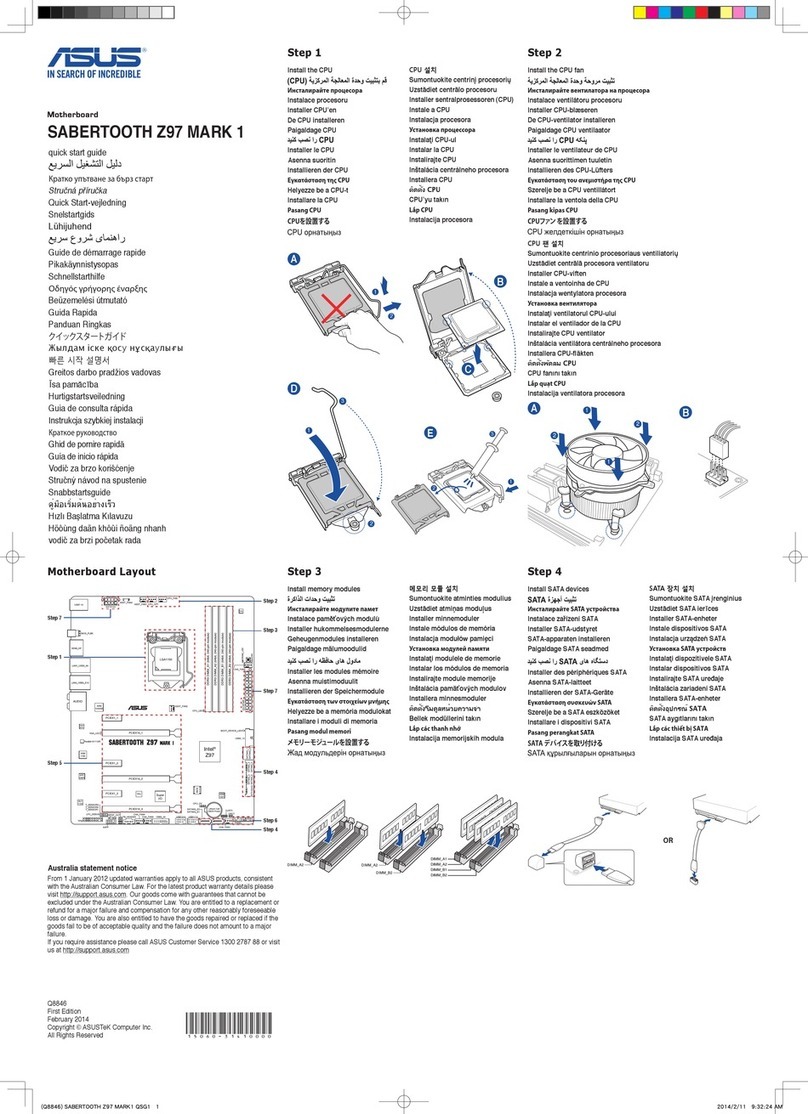
Asus
Asus SABERTOOTH Z97 MARK 1 quick start guide
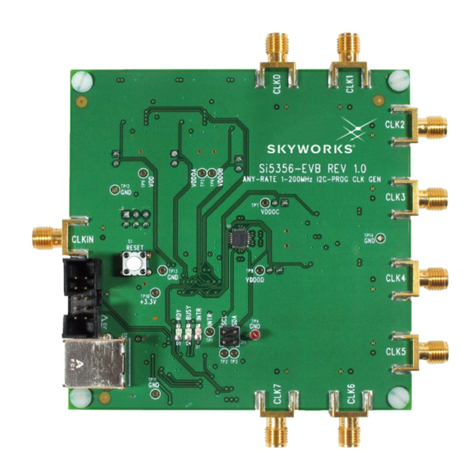
Skyworks
Skyworks Si5356-EVB user guide
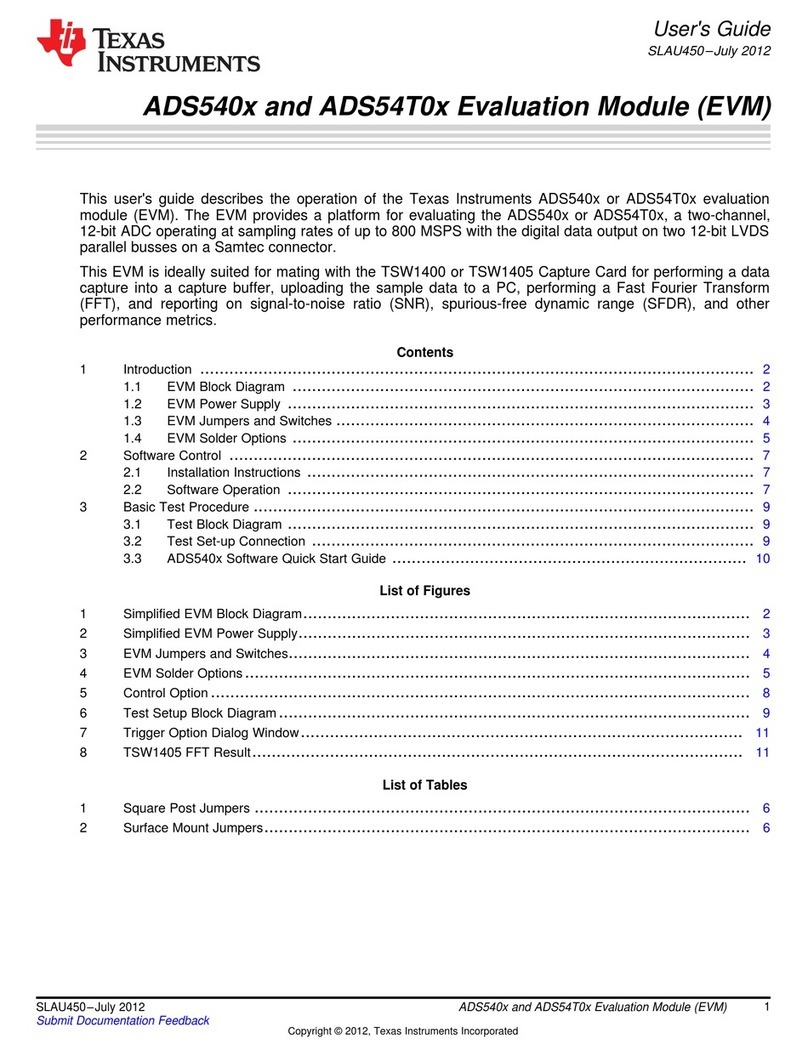
Texas Instruments
Texas Instruments ADS540x user guide
Freescale Semiconductor
Freescale Semiconductor MC13851 quick start

Abit
Abit IX38 QuadGT user manual
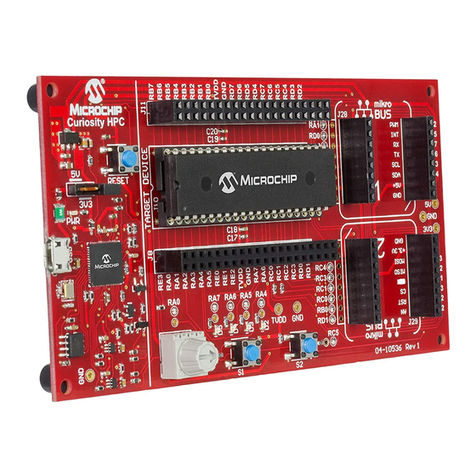
Microchip Technology
Microchip Technology Curiosity High Pin Count user guide
